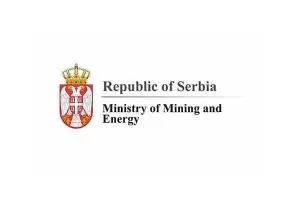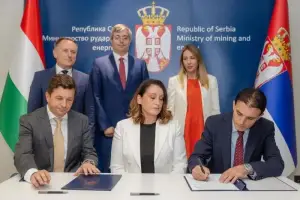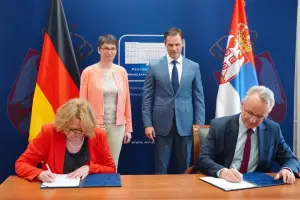Q:
A:
January – February overall foreign trade rises
Belgrade,
30 March 2007
The Serbian Statistics Office stated today that Serbia’s total foreign trade for the period January–February 2007 stands at $3.352 billion, which is an increase of 47.3% against the same period last year.
In euros, foreign trade totalled 2.572 billion, an increase of 35.9% compared to the same period in 2006.
Exports amounted to $1.106 billion, which is a 50.8% increase when compared to the same period last year, while the value of imports amounted to $ 2.245 billion, which is a 45.6% increase relative to the same period last year.
Expressed in euros, the value of exports amounted to 849 million, an increase of 39.2% compared to the same period last year. The value of imports amounted to €1.723 billion, which is a 34.4% increase against the same period last year.
The deficit for the period January–February 2007 stood at $1.139 billion, a rise of 40.8% against the same period last year. In euros, the deficit amounted to 874.3 million, an increase of 30% compared to the same period last year.
The export-import ratio expressed in dollars equalled 49.3% and went up compared to the same period in 2006 when it stood at 47.6%. In euros, the export-import ratio was 49.3% and it equalled 47.5% in the same period last year.
Increased imports were a result of the import of energy sources, which in the previous period stood at $446 million, which makes 19.9% of the entire import. Import of oil and oil derivatives alone stood at $245 million, that is, 10.9% of the entire import.
Furthermore, the increase is also due to copper and iron ores import, which are used in the production of elementary and other metals, the increased loans and the fact that road vehicle import in the period January–February 2007 stood at $152, making up 6.8% of total import.
Increased exports were driven by the initial effects of privatisation and the restructuring of companies, as well as by signed and ratified free trade agreements with signatory countries of the Stability Pact.
The exports increase is also due to surplus in trade of food and ready-made textile products, owing to the executed Agreement with the EU and the preferential status of Serbian goods.
In the period January-February 2007 period, regarding the structure of exports according to products destination (the principle of prevalence), the most notable were: reproduction products 69.9% ($773.4 million), then consumer goods 25.1% ($278.1 million) and equipment 5% ($55.0 million).
Regarding the structure of imports according to products destination, the most notable were: reproduction products 62.4% ($1400.9 million), then consumer goods 21.3% ($478.8 million) and equipment 16.3% ($365.9 million).
Major foreign trade partners in exports in the reference period were: Italy ($171.1 million), Germany ($114.8 million) and Bosnia-Herzegovina ($114.3 million).
Major foreign trade partners in imports in the reference period were: the Russian Federation ($361.8 million), Germany ($202.4 million) and Italy ($174.8 million).
Foreign trade with Bosnia-Herzegovina amounted to $68 million, while a surplus was recorded in trade with Montenegro, Macedonia and Slovenia.
The largest deficit was recorded in trade with the Russian Federation, which was due to the imports of energy commodities, mainly oil and gas. A deficit was also recorded in trade with the European Monetary Union and China.
According to the divisions of the Standard International Trade Classification (SITC) the following items had the greatest export share: iron and steel ($180 million), non-ferrous metals ($97 million), clothes ($62 million), cereals and respective products ($57 million), metal products, not elsewhere specified ($46 million). These five sections accounted for 39.9% of overall exports.
The first five divisions with the greatest imports share were the following: oil and oil derivatives ($245 million), road vehicles ($152 million), gas, natural and industrial ($108 million), industrial machines for general use ($104 million) and iron and steel ($99 million) and these accounted for 31.5% of overall imports.
Exports amounted to $1.106 billion, which is a 50.8% increase when compared to the same period last year, while the value of imports amounted to $ 2.245 billion, which is a 45.6% increase relative to the same period last year.
Expressed in euros, the value of exports amounted to 849 million, an increase of 39.2% compared to the same period last year. The value of imports amounted to €1.723 billion, which is a 34.4% increase against the same period last year.
The deficit for the period January–February 2007 stood at $1.139 billion, a rise of 40.8% against the same period last year. In euros, the deficit amounted to 874.3 million, an increase of 30% compared to the same period last year.
The export-import ratio expressed in dollars equalled 49.3% and went up compared to the same period in 2006 when it stood at 47.6%. In euros, the export-import ratio was 49.3% and it equalled 47.5% in the same period last year.
Increased imports were a result of the import of energy sources, which in the previous period stood at $446 million, which makes 19.9% of the entire import. Import of oil and oil derivatives alone stood at $245 million, that is, 10.9% of the entire import.
Furthermore, the increase is also due to copper and iron ores import, which are used in the production of elementary and other metals, the increased loans and the fact that road vehicle import in the period January–February 2007 stood at $152, making up 6.8% of total import.
Increased exports were driven by the initial effects of privatisation and the restructuring of companies, as well as by signed and ratified free trade agreements with signatory countries of the Stability Pact.
The exports increase is also due to surplus in trade of food and ready-made textile products, owing to the executed Agreement with the EU and the preferential status of Serbian goods.
In the period January-February 2007 period, regarding the structure of exports according to products destination (the principle of prevalence), the most notable were: reproduction products 69.9% ($773.4 million), then consumer goods 25.1% ($278.1 million) and equipment 5% ($55.0 million).
Regarding the structure of imports according to products destination, the most notable were: reproduction products 62.4% ($1400.9 million), then consumer goods 21.3% ($478.8 million) and equipment 16.3% ($365.9 million).
Major foreign trade partners in exports in the reference period were: Italy ($171.1 million), Germany ($114.8 million) and Bosnia-Herzegovina ($114.3 million).
Major foreign trade partners in imports in the reference period were: the Russian Federation ($361.8 million), Germany ($202.4 million) and Italy ($174.8 million).
Foreign trade with Bosnia-Herzegovina amounted to $68 million, while a surplus was recorded in trade with Montenegro, Macedonia and Slovenia.
The largest deficit was recorded in trade with the Russian Federation, which was due to the imports of energy commodities, mainly oil and gas. A deficit was also recorded in trade with the European Monetary Union and China.
According to the divisions of the Standard International Trade Classification (SITC) the following items had the greatest export share: iron and steel ($180 million), non-ferrous metals ($97 million), clothes ($62 million), cereals and respective products ($57 million), metal products, not elsewhere specified ($46 million). These five sections accounted for 39.9% of overall exports.
The first five divisions with the greatest imports share were the following: oil and oil derivatives ($245 million), road vehicles ($152 million), gas, natural and industrial ($108 million), industrial machines for general use ($104 million) and iron and steel ($99 million) and these accounted for 31.5% of overall imports.










